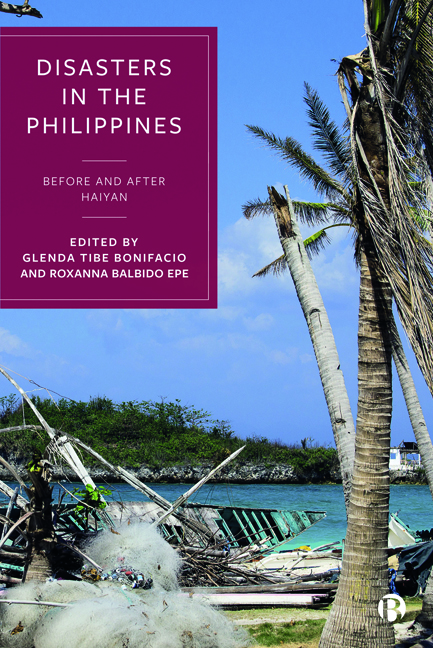1 - Introduction
Published online by Cambridge University Press: 18 January 2024
Summary
Disasters shape our realities. We both grew up in the Philippines and experienced the ravage of typhoons, floods, and earthquakes that have shaped our consciousness throughout our lives and continue even after migrating to Canada. Living in different islands in the archipelago was a constant reminder of the beauty and fury of nature and the capacity of our people to survive amidst the risks and impact of disasters. Typhoons, in our memories, simply followed the cycles and are expected in the ‘ber’ months with strong winds and rains that would cause secondary hazards such as flooding, landslides, health risks, disruption of economic or daily activities, and suspension of classes. The affected communities, local governments, businesses, organizations, and others have to deal with the challenges from the impact of disasters. We listened to our elders about the wrath of nature predicted in the color and movement of the clouds and the anxiety of animals nearby. We all survived the passing typhoons and were seemingly ready to clean up the debris around, bounce back again, and move on. But super typhoon Haiyan changed that.
Haiyan, known as Yolanda in the Philippine Area of Responsibility (PAR), was inconceivable in our living memory. The death and destruction were unprecedented in 2013. This time, we knew almost everyone who lost a family member from the historic storm surge. The immense pain and trauma still linger. Haiyan was the turning point in our attempt to draw more sociological perspectives of disasters in the Philippines, our benchmark of what follows one of the strongest typhoons that made landfall in the world.
Conceptualizing disaster archipelago
Is geography destiny (Gallup, Gaviria, and Lora 2003)? The Philippines is located “curiously enough, on the Eurasian Plate rather than on the adjacent Philippine Plate” (Hinga 2015, 248). The Philippine Sea Plate is “tectonically unusual” because “almost all boundaries are convergent” and the surrounding areas with “very active, producing numerous local earthquakes, tsunamis and volcanic activity” (Vokaty 2014). The Philippines is situated within the Pacific Ring of Fire where most of the world's active above-sea level volcanoes are located and is constantly facing a “variety of environmental hazards”; an archipelago, however, consisting of the “remains of previous eruptions” (Nagle 1998, 27).
- Type
- Chapter
- Information
- Disasters in the PhilippinesBefore and After Haiyan, pp. 3 - 24Publisher: Bristol University PressPrint publication year: 2023

